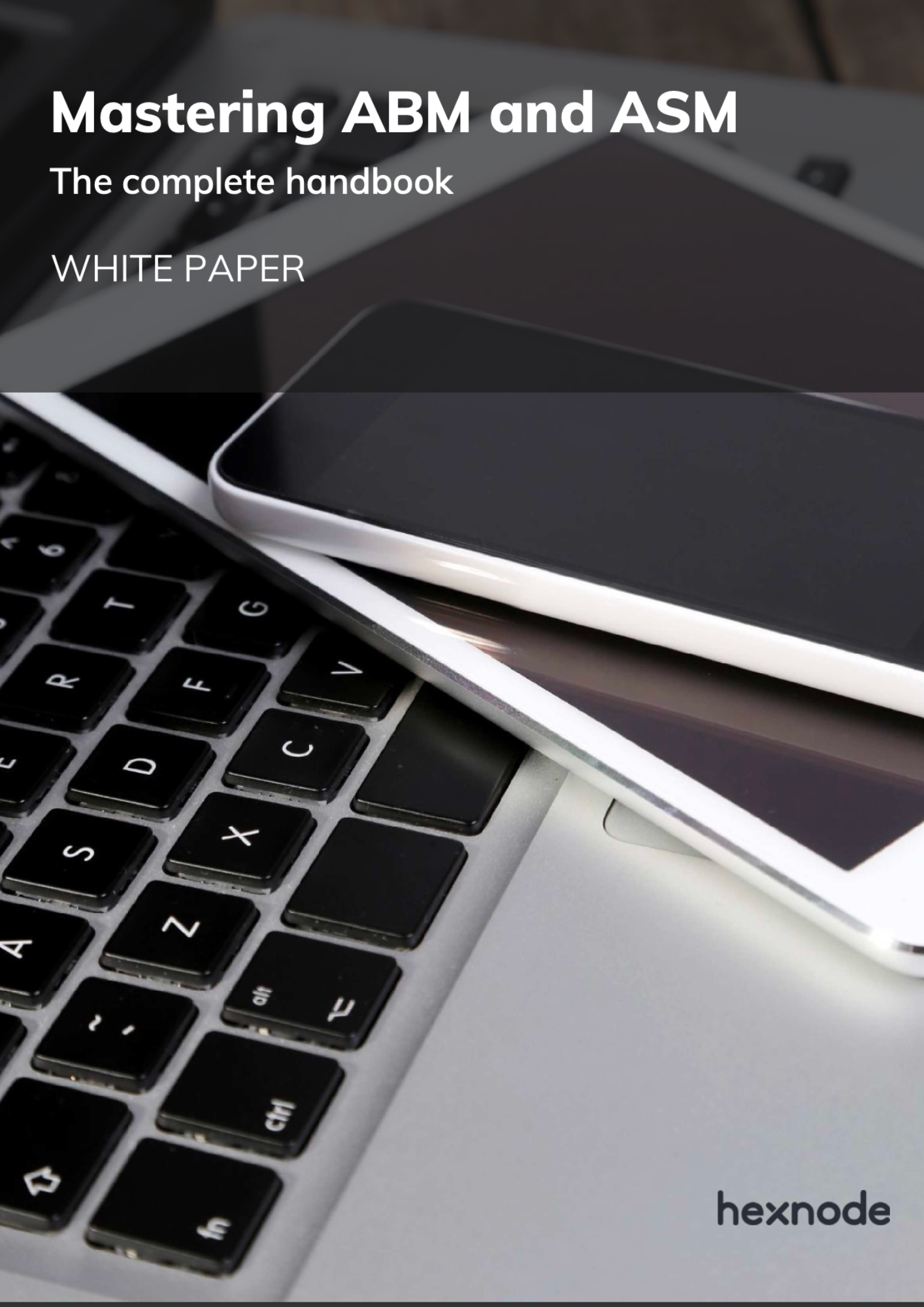Apple Business Manager: Reconceptualizing business excellence
Apple Business Manager is a web platform for IT Admins to centrally manage devices, apps, and accounts.

Get fresh insights, pro tips, and thought starters–only the best of posts for you.
Brendon Baxter
Aug 18, 2023
9 min read

Towards the end of the last decade, zero-touch device management gained a lot of popularity and zero-touch deployment was a huge deal back then. Apple already had a zero-touch deployment method of its own called the Device Enrollment Program (DEP). Apple also had an app procurement and deployment service Volume Purchase Program (VPP). But in 2018, Apple decided to club these two services together to form an all-in-one deployment and provisioning service called Apple Business Manager or ABM.
ABM simplified the whole process of device management. But ABM alone was not enough to manage Apple devices. In this blog we’ll see what Apple Business Manager is, how it helps to manage Apple devices, the relationship between ABM, and Mobile Device Management (MDM) tools and much more.
Many people think that ABM is an MDM, but it couldn’t be any further from the truth. ABM indeed helps to manage devices, but it cannot perform every function required to manage Apple devices effectively. So, what is ABM? Here is the answer. ABM is an online service provided by Apple to enroll and configure devices as well as assign them to users in an organization. You can also buy and distribute apps to devices in bulk using ABM. As the name suggests, ABM is perfect for businesses that provide Apple devices as work devices.
ABM is certainly not a replacement for MDMs, but it does simplify certain aspects of device management. As mentioned above, deployment is an area where Apple Business Manager can help organizations the most. Once your organizational ABM account is set up, you can automate the device enrollment into mobility management tools.
Apple devices bought directly from Apple, or any authorized reseller will be automatically added to the ABM portal once the customer ID or reseller number is registered in the ABM portal and from there you can set up an MDM server so that the devices will be automatically enrolled in the mobility management solution of your choice. Just like with VPP, you can buy app licenses and books from App Store in bulk and distribute them to organizational devices.
Apart from these two major features, you can create and control Managed Apple IDs using ABM. These corporate IDs can help separate work data from personal data and secure sensitive information on organizational devices as well as personal devices. Businesses can even make use of Apple at Work’s own Single Sign-On to secure access to company apps and resources.
Before you can start deploying devices using ABM you have to set up an ABM account and enroll your organization in the ABM portal. Once that is done, you are ready to deploy devices to users, enroll them in MDMs and deploy apps and books in devices. Here is what you need to enroll your organization in ABM:
Since both have a few similarities, people might think ABM and MDM are interchangeable. But Apple Business Manager is not a replacement for MDM nor is MDM a replacement for ABM. MDM and ABM work best when they are together. As I mentioned earlier, it is possible to connect MDM servers to the ABM portal so that, you can assign devices to the MDM server. This way, devices will be enrolled in the MDM as soon as it is switched on and connected to the internet.
But I can enroll my Apple devices in an MDM even without ABM, then why should I use it? This is a question at least some people will have. For starters, if you enroll your devices using ABM, there won’t be a need to manually set up the device. The device will be all set to use right after it is switched on. Apart from that, you can supervise the Apple device when it is enrolled using ABM. Supervision opens up a lot of possibilities for MDMs in terms of device management.
Any device management features that your ABM portal is unable to provide can be configured via an MDM. Also, you can monitor devices in real-time and create reports on devices and users to make sure that everything is going smoothly. You can also meet regulatory compliance standards using an MDM like Hexnode. Last but not least, MDM can mitigate the consequences of lost or stolen devices much more efficiently.
Okay, now you are equipped with the information on what Apple Business Manager is, how to set it up, and why ABM works well together with an MDM solution. But which MDM is the best? Well, if you haven’t already made up your mind, here is why you should consider Hexnode.

Learn about all the different features available in ABM and ASM and the benefits of pairing these platforms with a UEM solution like Hexnode.
Download the white paperJust like any other MDM that supports Apple devices, Hexnode also offers integration with ABM enabling seamless and easy device deployment. Apart from taking advantage of Apple Business Manager’s features, Hexnode offers a lot more. Here are some of the key things Hexnode offers in terms of Apple device management:
While Apple Business Manager offers streamlined device deployment and management, it is not a direct replacement for Mobile Device Management (MDM). ABM excels when used together with an MDM solution, forging a solid combination that maximises management and efficiency. By integrating Hexnode with Apple Business Manager, you harness the power of both tools, enabling seamless device management, enhanced security, and comprehensive oversight. Take advantage of the ABM and MDM partnership to maximize the effectiveness of your device management strategy and boost productivity throughout your company.
Sign up for a free trial and explore how Hexnode can help you get the most out of Apple Business Manager.
Sign up!